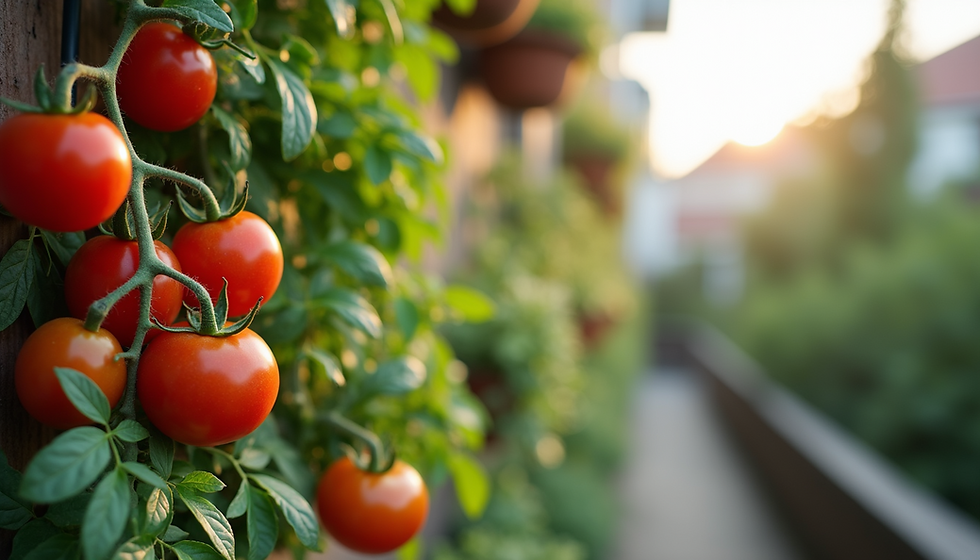How to Create the Perfect Foundation for Healthy Plants
- Herman Muhammad

- Nov 10
- 4 min read
Creating a thriving garden starts with a strong foundation. Healthy plants depend on the quality of the soil they grow in. Without the right soil conditions, even the best seeds and plants can struggle to survive. This guide will walk you through the essential steps to prepare your soil properly, ensuring your plants have the nutrients, structure, and environment they need to flourish.
Understanding Soil Preparation for a Healthy Garden
Soil preparation is the process of getting your garden soil ready for planting. It involves improving soil texture, fertility, and drainage to create an ideal environment for roots to grow. Proper soil preparation helps plants absorb water and nutrients efficiently, which leads to stronger growth and better yields.
Why Soil Preparation Matters
Nutrient availability: Plants need essential nutrients like nitrogen, phosphorus, and potassium. Soil preparation helps balance these nutrients.
Soil structure: Good soil structure allows roots to penetrate easily and access air and water.
Drainage: Well-prepared soil prevents waterlogging, which can cause root rot.
Weed control: Preparing soil can reduce weed seeds and competition for resources.
By investing time in soil preparation, you set the stage for a successful growing season.
Steps for Effective Soil Preparation
To create the perfect foundation for your plants, follow these practical steps:
1. Test Your Soil
Before making any changes, test your soil to understand its pH and nutrient levels. You can buy a home testing kit or send a sample to a local extension service. Knowing your soil’s condition helps you decide what amendments are needed.
2. Clear the Area
Remove any debris, rocks, and weeds from your garden bed. Weeds compete with your plants for nutrients and water, so clearing them out is essential.
3. Loosen the Soil
Use a garden fork or tiller to break up compacted soil. Loosening the soil improves aeration and root penetration. Aim to work the soil to a depth of 8-12 inches.
4. Add Organic Matter
Incorporate compost, aged manure, or leaf mold into the soil. Organic matter improves soil fertility, moisture retention, and microbial activity. Spread a 2-3 inch layer over the soil and mix it in thoroughly.
5. Adjust Soil pH
If your soil test shows it is too acidic or alkaline, add lime to raise pH or sulfur to lower it. Most plants prefer a pH between 6.0 and 7.0.
6. Fertilize Appropriately
Based on your soil test, add balanced fertilizers or specific nutrients your soil lacks. Avoid over-fertilizing, which can harm plants and the environment.
7. Level and Smooth the Soil
Rake the soil surface to create an even bed. This helps with planting and water distribution.

Choosing the Right Soil Type for Your Plants
Different plants thrive in different soil types. Understanding your soil type helps you make better decisions about amendments and plant selection.
Common Soil Types
Sandy soil: Drains quickly but holds fewer nutrients. Add organic matter to improve water retention.
Clay soil: Holds water and nutrients well but drains poorly. Add coarse sand and organic matter to improve texture.
Loamy soil: Ideal for most plants. It has a balanced mix of sand, silt, and clay.
Silty soil: Smooth and retains moisture but can compact easily. Add organic matter to improve aeration.
How to Identify Your Soil Type
Take a handful of moist soil and squeeze it. If it forms a ball that crumbles easily, it’s loamy. If it feels gritty, it’s sandy. If it feels sticky and holds its shape, it’s clay.
Adjust your soil based on its type to create the best environment for your plants.
Water Management and Soil Preparation
Water is vital for plant health, but too much or too little can cause problems. Proper soil preparation helps manage water effectively.
Improve Drainage
If your soil tends to stay wet, create raised beds or add sand and organic matter to improve drainage. Avoid compacting soil by walking on garden beds.
Enhance Water Retention
In sandy soils, add organic matter like compost or peat moss to help retain moisture. Mulching the soil surface also reduces evaporation.
Irrigation Tips
Water deeply but less frequently to encourage deep root growth.
Use drip irrigation or soaker hoses to minimize water waste.
Water early in the morning to reduce evaporation.

Maintaining Soil Health Over Time
Soil preparation is not a one-time task. Maintaining soil health ensures your plants continue to thrive year after year.
Rotate Crops
Changing the types of plants grown in a bed each season prevents nutrient depletion and reduces pests and diseases.
Add Cover Crops
Planting cover crops like clover or rye during the off-season protects soil from erosion and adds organic matter.
Mulch Regularly
Mulching conserves moisture, suppresses weeds, and adds nutrients as it breaks down.
Avoid Over-Tilling
Excessive tilling can damage soil structure and harm beneficial organisms. Limit tilling to when it is necessary.
Monitor Soil Nutrients
Test your soil every few years and amend as needed to maintain nutrient balance.
For more detailed guidance on proper soil preparation, visit this helpful resource.
Building a Strong Foundation for Your Garden’s Future
Healthy plants start with healthy soil. By understanding your soil type, testing and amending it, managing water wisely, and maintaining soil health, you create the perfect foundation for your garden. This foundation supports vigorous plant growth, higher yields, and a more enjoyable gardening experience.
Investing time in soil preparation pays off with beautiful, thriving plants season after season. Start today and watch your garden flourish!





Comments